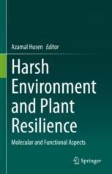Search
Search Results
-
Mosaic composition of RIP1–RIP3 signalling hub and its role in regulating cell death
RIP1 and RIP3, cell death mediators, form fibrous amyloids. How RIP1/RIP3 amyloidal oligomers assemble functional necrosomes and control cell death...

-
Environmental colour pattern variation in Mediterranean Podarcis
BackgroundLizards of the genus Podarcis are widespread in the Mediterranean region, including islands and island archipelagos. These small-bodied...

-
Black-and-white pelage as visually protective coloration in colobus monkeys
AbstractConspicuous coloration is often seen as the evolutionary consequence of either sexual selection or warning predators visually about prey...

-
Avian nuptial plumage coloration changes differently when exposed to urban and rural areas
AbstractAvian plumage coloration could be altered by external factors like dust accumulation, but the effect of environmental conditions on such...

-
Colouration matters in dull toads: ultraviolet adornment for ladies and agrochemicals fading effects
Integument colouration can influence many aspects of fitness, and is under strong sexual selection. Amphibians often express sexual dichromatism, and...

-
Ontogenetic colour change of a sexual ornament in males of a damselfly: female mimicry, crypsis or both?
Female mimicry by males is a widespread phenomenon in several taxa and may be involved in aggression avoidance or facilitated access to resources. In...

-
Architecture and dynamics of a desmosome–endoplasmic reticulum complex
The endoplasmic reticulum (ER) forms a dynamic network that contacts other cellular membranes to regulate stress responses, calcium signalling and...

-
Visual antipredator effects of web flexing in an orb web spider, with special reference to web decorations
Some visual antipredator strategies involve the rapid movement of highly contrasting body patterns to frighten or confuse the predator. Bright body...

-
Zinc Acts Synergistically with Berberine for Enhancing Its Efficacy as an Anti-cancer Agent by Inducing Clusterin-Dependent Apoptosis in HT-29 Colorectal Cancer Cells
It is now widely accepted that anti-cancer medications are most effective when administered in combination. Zinc is an essential micronutrient whilst...

-
Advances in Research on Ecophysiology and Evolutionary Ecology: The Red-Legged Partridge as a Study Model
The red-legged partridge is increasingly recognized as a good study model in ecophysiology and evolutionary biology. Most research in these fields...
-
No evidence for potential sexual information from a monochromatic carotenoid trait in a dichromatic woodpecker species
We investigated potential information content in red carotenoid-based undertail coverts of 28 pairs of breeding Great Spotted Woodpeckers by...

-

-
In paired preference tests, domestic chicks innately choose the colour green over red, and the shape of a frog over a sphere when both stimuli are green
Many animals express unlearned colour preferences that depend on the context in which signals are encountered. These colour biases may have evolved...

-
NF-κB-inducing kinase (NIK) is activated in pancreatic β-cells but does not contribute to the development of diabetes
The transcription factor nuclear factor-κB (NF-κB) has a key role in the pathogenesis of diabetes and its complications. Although activation of the...

-
Information content of ultraviolet-reflecting colour patches and visual perception of body coloration in the Tyrrhenian wall lizard Podarcis tiliguerta
AbstractColour signals are ubiquitous in nature but only recently have researchers recognised the potential of ultraviolet (UV)-reflecting colour...

-
Do green plants age, and if so, how?
Time-dependent ageing-like processes in green plants are discussed and compared to gerontological changes in animals and other organisms. The...
-
Ecogenomics of the Marine Benthic Filamentous Cyanobacterium Adonisia
Turfs are among the major benthic components of reef systems worldwide. The nearly complete genome sequences, basic physiological characteristics,...

-
Physiological and Molecular Responses to Heavy Metal Stresses in Plants
In recent times, anthropogenic perturbations (extensive mining, modern agricultural practices, accelerated industrialization, etc.) of environment...
-
Comparative psychophysics of colour preferences in two species of non-eusocial Australian native halictid bees
Colour signalling by flowers appears to be the main plant-pollinator communication system observed across many diverse species and locations...

-
ETV4 is a mechanical transducer linking cell crowding dynamics to lineage specification
Dynamic changes in mechanical microenvironments, such as cell crowding, regulate lineage fates as well as cell proliferation. Although regulatory...

